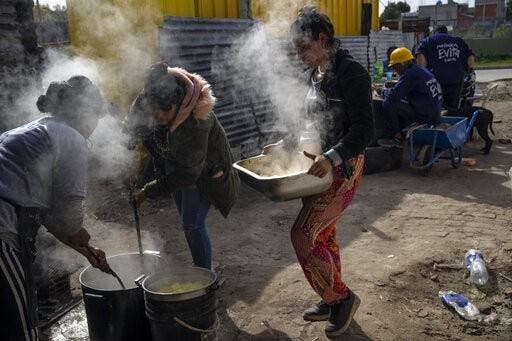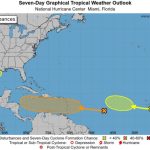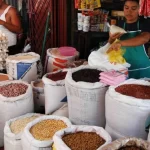Inflation makes Latin Americans struggle to buy basic foods

No item is more essential in Mexican dining rooms than the corn tortilla. But the inflationary bubble surrounding Latin America and the rest of the world means that people like Alicia García, a cleaner in a restaurant in Mexico City, have had to reduce their consumption.
Months ago, García, 67, bought several tortillas to take home every day. Now, his salary is not enough for him, and he limits himself to one kilo (2.2 pounds).
“Everything has gone up here,” she told The Associated Press, standing outside the tortilla factory. “I, who work with the minimum wage, how is it going to reach me?”
Just as inflation is not limited to tortillas, whose prices in the country’s capital have shot up by a third in the last year, the predicaments are not limited to Mexico. The most significant price increase in Latin America in a generation has caused many products with solid local consumption to become difficult to acquire. As a result, ordinary people face a daily life that has become a more painful struggle with no respite in sight.
Countries started seeing higher prices due to bottlenecks in supply chains caused by the COVID-19 pandemic and government stimulus programs. Then Russia’s invasion of Ukraine in late February caused fertilizer prices to skyrocket, affecting the cost of agricultural products, including corn. Global fuel prices also rose, driving up the cost of transporting items.
In Chile, annual inflation was 10.5% in April, the first time in 28 years that the index has reached double figures. Colombia’s rate reached 9.2%, its highest level in two decades. In Argentina, whose consumers have dealt with double-digit inflation for years, the price increase is 58%, the highest in three decades.
In Buenos Aires, where much beef is consumed, some families have begun to look for alternatives.
Marcelo Gandulfo, a 56-year-old security guard, said he had never bought pork before, but now he does every week. It’s cheaper; he pointed out as he walked out of a butcher shop in Almagro, a middle-class neighborhood.
Last year, according to the Institute for the Promotion of Argentine Beef, the average Argentine consumed less than 50 kilograms of beef for the first time since the data began to be kept in 1958. However, prices have risen much higher than normal in recent months, said Daniel Candia, a 36-year-old butcher.
He has been in this business for 16 years, and this is the first time he has seen something like this, he added.
Latin America is suffering from a “sudden increase in the prices of necessities,” World Bank President David Malpass said during an online conference on Thursday. He pointed out that energy, food, and fertilizer prices are rising at a rate not seen in many years.
Around the world, central banks raise interest rates to contain inflation. Brazil’s central bank has embarked on one of the world’s most aggressive rate-hike cycles after inflation hit 12%, its fastest pace since 2003. In addition to the factors fueling regional inflation, agricultural products from Brazil have become more expensive due to drought and frost. The price of tomatoes, for example, has more than doubled in the last year.
Raising interest rates is the primary tool for governments to fight inflation, but raising them carries the risk of weakening an economy to the point of causing a recession. Last year, the World Bank estimated that the regional economy grew 6.9% as it recovered from the recession caused by the pandemic. However, Malpass said it is expected to rise only 2.3% this year.
“It is not enough to make progress in reducing poverty or social unrest,” he added.
The Brazilian media inform their readers which foods they can substitute some customary products to help stretch the family budget. But certain items, like coffee, are irreplaceable, especially in a nation that produces more of this product than any other in the world.
Ground coffee has become so expensive that shoplifting has begun to target it, said Leticia Batista, a cashier at a supermarket in Sao Paulo.
“It breaks my heart, but I have told many to give me the dust back,” Batista said in the upscale neighborhood of Pinheiros.
In his own humbler neighborhood, he said, the cost of coffee “is a big deal.”
Marcelo Ferrara, a 57-year-old engineer, enjoyed a daily espresso at his local bakery on the more luxurious side of the coffee spectrum. But, since January, the price has soared 33% to 8 reais ($1.60). So he reduced his consumption to two per week.
“I just can’t afford that many of these ,” Ferrara said as she picked one up.
Decades have passed since the region’s countries simultaneously suffered a decisive blow from inflation. Today, one key difference is that world economies are much more interconnected, said Alberto Ramos, head of Latin American macroeconomics research at Goldman Sachs.
“Interest rates will have to go up; if not, inflation will run amok and the problem will get even worse,” Ramos said. “Governments cannot be afraid to use rates. It is a proven remedy to lower inflation.”
But so far, the higher rates do not give much hope that inflation will slow significantly in the short term. Last month, the International Monetary Fund forecast that average inflation in the region, excluding Venezuela, will drop to 10% by the end of the year. However, it is not far below the 11.6% rate recorded at the end of 2021 and is still more than double the 4.4% estimated for advanced economies, according to the IMF’s World Economic Outlook.
“It will take at least a couple of years of relatively tight monetary policy to deal with this,” Ramos said.
That means that, for now, belt-tightening and going without some staples is likely to become the new norm for the poorest members of society in a notoriously unequal region. More than a quarter of Latin America’s population lives in poverty, defined as living on less than $5.50 a day, and that number is not expected to change this year, according to a World Bank study released last month.
Sara Fragosa, a 63-year-old housewife from Mexico City, made no secret of her anger at price gouging during an interview at a market stall.
“The poorer, the more amolados (beaten), and the rich go to the top,” said Fragosa, who replaced her regular purchase of meat with quinoa and oatmeal.
“One was not used to that,” he added, “but there is no other.”
















